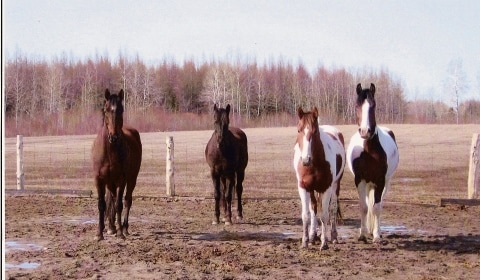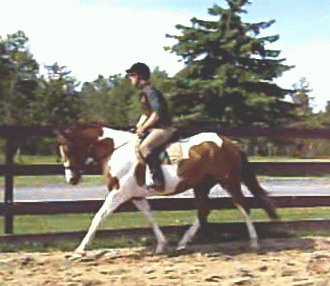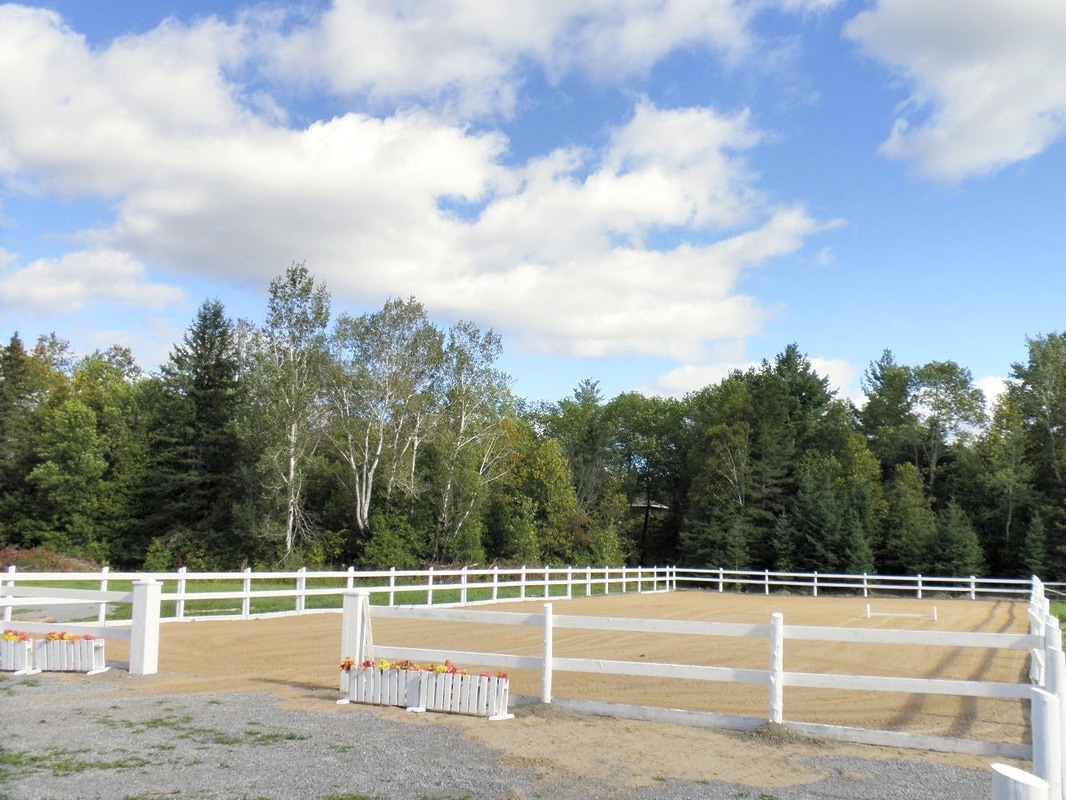 Ring #1: Timmins 2004
Ring #1: Timmins 2004 We built a larger, properly fenced ring on the front of the property a few years later. We asked our fellow stable owners in preparation "What kind of sand do you have?"...and so it began: multiple answers. When it was time to get the sand, we called a local quarry owner and provided all the info we had, and expected him to know what we needed. We visited the quarry, I was excited to proceed, and we were presented with three sandy holes in the earth. Which hole did we prefer? My confidence was eroding...like sand through my fingers, if you will.
We made a huge blooming mistake. The sand wasn't cleaned, so I was picking stones forever. It was also too fine and any moisture caused it to become deep and sloppy. We had to fix it in 2008: a hard packed layer of granular A gravel with a different sand on top. By the luck of mother nature, that sand was quite perfect: it was clean, it packed underfoot, the water quickly drained out of it, the quarry was about 2kms from our house, and it was cheap! We just called it by the owner of the quarry. Say "Passaw's sand" and the locals would nod knowingly. That ring did me very well, serving as my venue to start riders and horses from March to December,
with any luck, and helping me prepare for exams and competitions for the next 4 years with no maintenance other than using a drag harrow behind the ATV on it every few days. We hear it's now used as a beach volleyball court.
Fast forward to 2013. Our new farm in Pembroke needed a proper riding ring. I researched sand all summer and we contacted the owners of local quarries and stables. I'd quote The Perfect Sand Spec, and was met with blank stares at the quarries, to my dismay. They'd show me something, but it was coarse gravel I'd never seen used in a ring. Contractors would bring us samples, and I'd stare into it while sifting it through my fingers, like I was trying to read some prophecy. It was a hugely expensive decision on my shoulders, not only up front but going forward: bad footing and good training cannot co-exist.
Our outdoor ring has Hydro Sand in it, again on a proven base of packed Granular A gravel. Why is it called Hydro? I don't know, but we joke "Cuz it's expensive as Hydro." It's working very well. I considered the indoor arena footing for 9 months before it was built. The Hydro sand gets a bit dusty when it's really dry. That is a serious breathing hazard in an indoor, where the footing is normally bone dry unless you use additives. Our excavator brought more samples and laid them out on his tailgate one Saturday morning. I had my own samples ready to compare. Crunch time again. My decision? Filter media sand. The kind they use for septic systems due to the conformity of the particles. It's more uniform and coarser than Hydro. We added Magnesium Chloride to counter the dust, purchased a proper Ring Conditioner to smooth and level the sand, and have rigged a nifty waterer. So far, so good!



 RSS Feed
RSS Feed